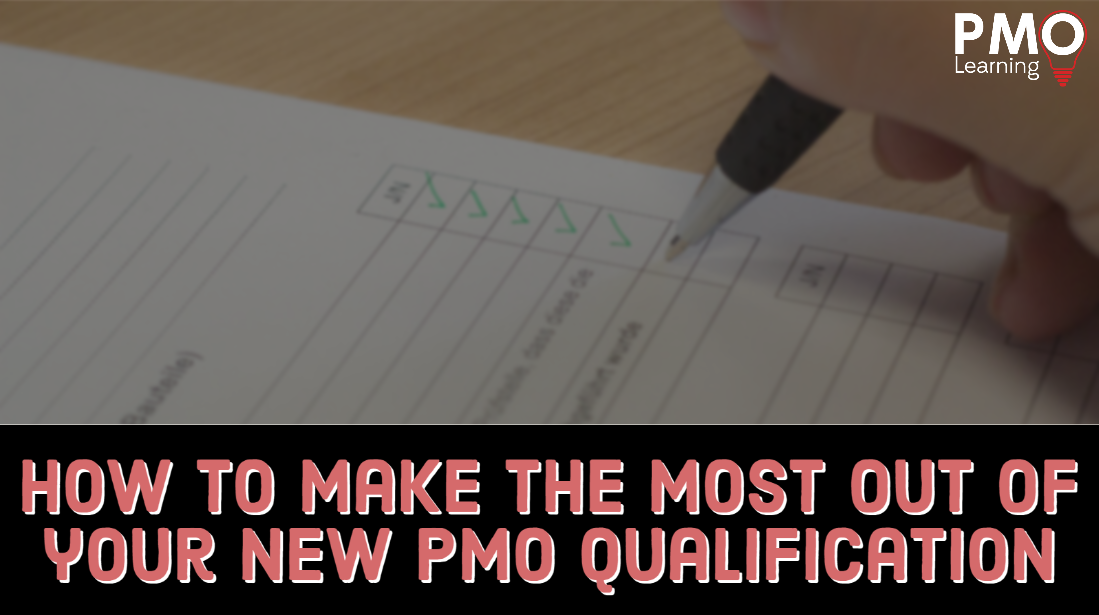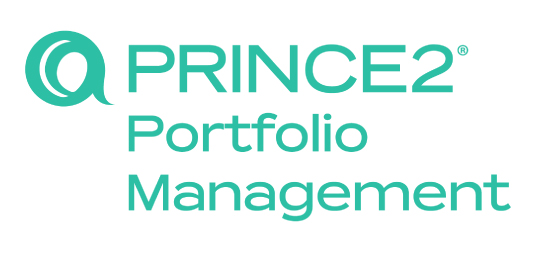Whilst completing new qualifications can be enjoyable and enriching for our professional development, we can often leave the training feeling we didn’t make the most out of our time in the classroom.
We might have wanted to ask more questions, connect with other delegates or even relate the content to our day-to-day roles. We’ve compiled some tips to help you make the most out of your new PMO qualification.
1. Apply the learned knowledge to your current organisation
A lot of training is heavily content-based, and so in order to ensure we are getting the most value of what we’re learning, we need to be applying this to our day-to-day experiences at work.
Let’s take a look at the P3O® Foundation certification as an example. Modules and suggestions of how to make them relevant to your organisation may include:
- Why have a P3O®? – What is the purpose of your PMO? What has it been set up to do?
- How to Operate a P3O® (including Tools and Techniques) – What tools and techniques do you currently use? How could these be improved?
A good idea whilst you’re in the training course is to reflect as you work through it. Within your course notes perhaps, use a page to title each section or module then make a few notes on what it is about on the left-hand side, and on the right try and think about how that relates to your organisation and what ideas you might have for the PMO and potentially any action you could take. It doesn’t have to be actions you know you can do tomorrow, even aspirational ones are good here.
This will do 2 things:
- It will provide you with something concise to take away from the course that you can immediately use to help you when you return to work.
- It will reinforce what you have just been learning because you are applying the new course content to a context that you are familiar with.
2. Take advantage of the trainers time and ask questions relevant to your experience
As you’re making your notes on the course content and how it’s relevant to you, you may have some specific questions about your current role or project. Make sure you bring these up in course discussions, not only will it expand your training, but applying learning to your own knowledge makes the material easier to understand and remember later on.
During the course, you will have plenty of time to chat with the trainer and pick their brain. Part of the training experience is learning from your fellow learners as well as the trainer. Ask your questions to the group, to make the most of both the trainer’s expertise as well as others’ experiences.
If that’s something you’d rather not do then take a moment to ask the trainer 1-2-1. There are plenty of good times to catch the trainer including first thing in the morning before the day begins, at lunchtime or in the evening before going home.
3. Action Your Knowledge
You’ve come away from the course feeling like you’ve really learnt a lot. Now what?
Make sure you use your knowledge in your current role. If you’re in a managerial role, this can be easy to do, as you’ll have more agency over processes in your PMO. But even if you’re working within a PMO, you can suggest updates to out of date techniques, adopt a new approach or attitude in your work and share your understanding with others.
4. Negotiate With Your Certification
So, you’ve got your certification, you’ve started to apply your knowledge to your PMO and you have demonstrated a commitment to developing professionally. Perhaps getting your certification was required to progress to the next step of your career?
Use this new qualification as a point for negotiation – particularly if you’ve completed a full set of certifications. Getting fully certified can be a opportunity to start a dialogue around payrises, bonuses, or even a promotion!
5. Put it on LinkedIn and make sure you update your CV
Part of growing in your career is celebrating your wins (and keeping a record of them)! It’s always a good idea to keep your CV and professional online presence up-to-date, but particularly when you have completed a certification.
Lots of certifications now have digital badges that you can display on your LinkedIn profile to share your achievement with your network. It might also be a good idea to connect with your coursemates – training, even virtually, always provides an opportunity to network with others in the PMO. You never know who you might meet!
When updating your CV with your new certitification, it shouldn’t simply be a bullet point with the title of the qualification.
Demonstrate how you have applied what you have learned on your training to your PMO, how it has been of benefit, and how you have actioned your knowledge.
If you’re looking for help in showcasing achievements on your CV, our CV Development for PMO Professionals course may be a good option for you – there are six modules which will take you through the steps you need to take before writing your CV before learning the practical steps to create a compelling CV that gets you noticed for all the right reasons by hiring organisations and recruiters.
The course is delivered via email and you will have lifetime access to your materials – perfect for keeping your CV in ship shape and up-to-date with all your achievements! You can find out more about our CV Development course here.
So there you have it, our top tips for making the most out of your new PMO qualification – what advice would you give others trying to maximise the benefits from PMO training?
The P3O® courses on this page are offered by PMO Learning. P3O® is a [registered] trade mark of AXELOS Limited. All rights reserved. P3O® is a registered trade mark of AXELOS Limited, used under permission of AXELOS Limited. The Swirl logo™ is a trade mark of AXELOS Limited, used under permission of AXELOS Limited. All rights reserved.
Enjoying Our Blog?
Sign up and receive all our articles (we’ll send you an update once a week!) plus special offers and events:







